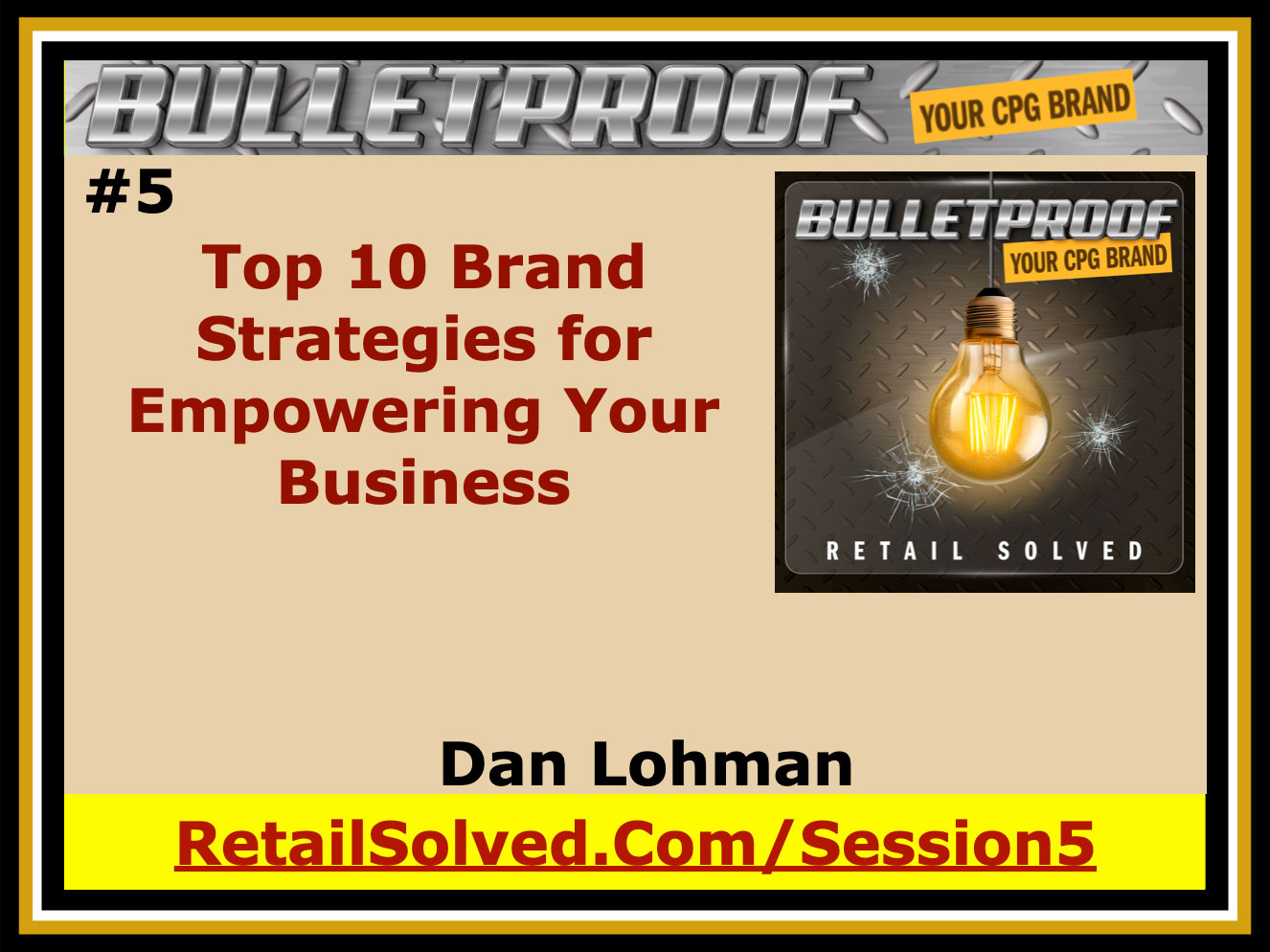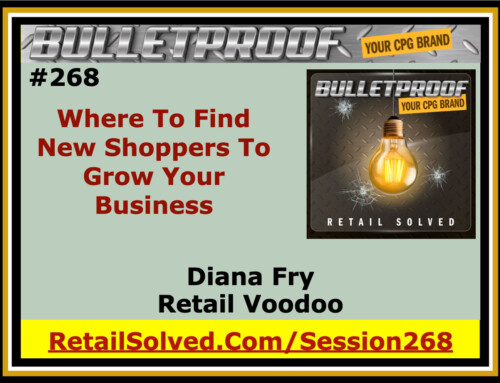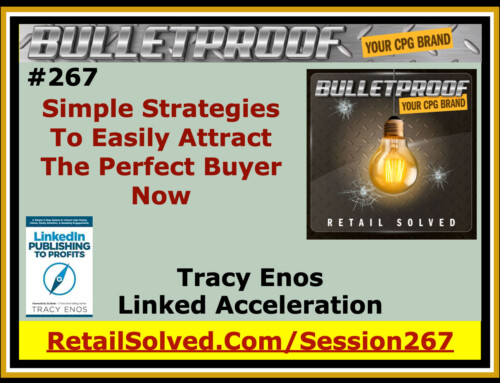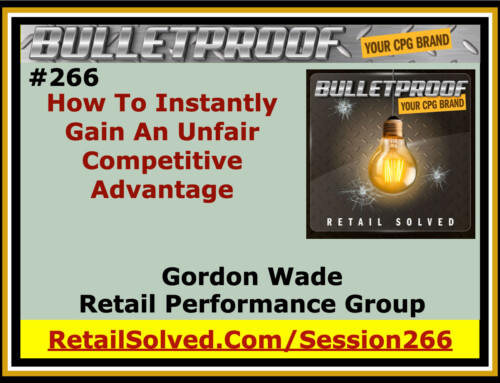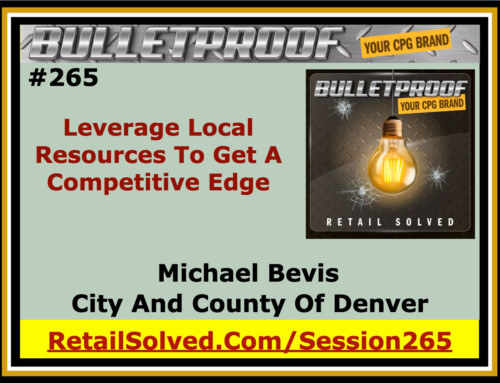Join the Bulletproof Your Brand podcast for insights into effective brand strategies that empower and elevate your brand. Learn the top 10 strategies for building sustainable sales and profits. These strategies include becoming a trusted resource to retailers, becoming an expert in your ideal customers and competitors, and more. This is how you convert occasional customers into loyal ambassadors.
Nothing happens until someone buys your product and shoppers can’t buy what they can’t find. The path to sustainable sales and getting your product in the hands of more shoppers is critical to increasing sustainable food production and sales. It is the key to more organic farming, healthy product innovation, reduced obesity, food allergies and supporting a food ecosystem that is sustainable beyond tomorrow. Nowhere is this truer than in natural. The competitive landscape is changing and the old strategies simply are not enough.
Listen where you get your podcast
Important: Brand Secrets and Strategies has been rebranded to Retail Solved. Please swap all BrandSecretsandStrategies.com URL’s with RetailSolved.com. This is now the Bulletproof Your Brand podcast. Thank you for listening! BRAND SECRETS AND STRATEGIES PODCAST #5 Hello and thank you for joining us today. This is the Brand Secrets and Strategies Podcast #5 Welcome to the Brand Secrets and Strategies podcast where the focus is on empowering brands and raising the bar. I’m your host Dan Lohman. This weekly show is dedicated to getting your brand on the shelf and keeping it there. Get ready to learn actionable insights and strategic solutions to grow your brand and save you valuable time and money. LETS ROLL UP OUR SLEEVES AND GET STARTED! Thank you for joining me today. Today I would like to talk about the top 10 strategies to build sustainable sales and profits. Nothing happens until someone buys your product and shoppers can’t buy what they can’t find. The path to sustainable sales and getting your product in the hands of more shoppers is critical to increasing sustainable food production and sales. It is the key to more organic farming, healthy product innovation, reduced obesity, food allergies and supporting a food ecosystem that is sustainable beyond tomorrow. Nowhere is this truer than in natural. The competitive landscape is changing and the old strategies simply are not enough. Natural brands and retailers need to become more strategic. This does not mean compromising your principles. On the contrary, this is their strength and their principles should be at the heart of every strategy. This means focusing on the value they create and leveraging that at retail and with consumers. Consumers are willing to pay a premium for quality and healthy products. Healthy products are responsible for most of the growth in every channel and across every category. To begin to develop your strategy over the next year, it’s wise to reflect on the previous year. Did you achieve all your objectives? Did you reach all your goals? What would you have done differently given the opportunity? Did your actual results match your goals, those projections that you set? These are all important questions you need to answer. This is the first place to start when you are developing a strong business strategy. Next, look at the goals themselves. Were your previous goals reasonable and achievable? Don’t set goals that are unattainable, be reasonable. For example, I’d like to lose weight, but losing 25 pounds by the end of the week is not going to happen. Your goals should be smart, specific, measurable, attainable, realistic and timely. Set goals that will encourage and motivate you. Set your business goals at least six to twelve months ahead on the calendar and give yourself plenty of time to achieve them. Unfortunately, a lot of brands are on auto pilot. Did you know that a plane flying from LA to Hawaii is off course most of the time? There are concept adjustments that the pilot needs to make, even while on auto pilot, to keep the plane on course. The same holds true for your business. If you don’t have a well-defined target, how will you know if you ever hit it? More importantly, how will you know if you ever get off course? It’s critical to make sure that you are constantly monitoring your strategies and your success as you go forward. That’s the focus of this section. One of the most important aspects of goal setting, at least in business, is score carding. Score carding is a process where you identify all the different goals that you want to achieve. You apply reasonable time frames, in terms of when you hope to achieve them. You assign those goals or those tasks to individuals who are going to help you reach those goals and then you review that on a regular basis. A score card is perhaps one of the most under-utilized, yet is one of the most important tools that any business could have. So, what are the top 10 goals? # 1 Know the retailer you serve. Understand the competition and the challenges they face, work to help them remain competitive. You are the eyes and the ears for your retailer-partner. Know every retailer in their category and market. Be indispensable to those retailers, help them know and understand what the competitive challenges are. The challenges that may not be on their radar. Remember, it is not just brick and mortar stores that compete head to head with each other, it’s also on-line stores. It is also stores in other channels. You may be a natural food store, or a drugstore, or whatever, but you are also competing against anyone else who sells a like product, even a convenience store. Know your competition. # 2 Become a trusted, value-added resource for your retail partners. Become a leader in the category. Help your partners understand what is going on in the category, what is driving sales and what the trends are that bring consumers into their stores. Help the retailer also understand what products are being purchased in other departments that are complimentary to that category. Provide product assortment, merchandizing, promotions and pricing suggestions to the retailer. Help them maximize every selling opportunity to convert consumers to loyal shoppers. # 3 Know your customers and your competitor’s customers intimately. This is critical to your success. Not doing this could cause you to fail. I’m not talking about what you could learn from a third-party report. Those are great resources but don’t rely on those alone. Get to know your customer. Research their Facebook and Twitter accounts. Understand who that customer is, what their needs are, what their wants are, talk to them directly. Invite them to be part of your community. Big brands tend to commoditize their shoppers, they tend to put everyone in like buckets. This is your opportunity to differentiate yourself and stand out on the shelf. Armed with this information will give you the single greatest competitive advantage you could have. Weave this into every selling presentation and help the retailer understand who your customer is and why they are important to their store. # 4 Know your competition. Become an expert on your competition Don't just go to the shelf and say, these are the items I see on the shelf next to my product. Know your competition. What is different about them? You would never expect professional athletes to show up and not know anything about the team they are competing against. Not just the simple things, like, do they bat left handed or right handed? Are they aggressive on fourth downs? But more importantly, what strategies do they use, what works and what doesn’t work? What does their fan base look like? Apply these same strategies to your competition at shelf. Who buys their products? Why did they choose your product over their product or vis-à-vis? What ingredients are in their product that differentiate them from other brands on the shelf? How do they market their product? How do they promote it? How deep of a discount do they give when they do promote it? How frequently do they promote it? Become a true expert and know everything about your competition. This is going to help you down the road. # 5 Know your competitor’s strategies. I touched on that a moment ago. Understand how they promote, when they promote, why they promote, what is their preferred price point when they do promote, then how do they advertise, how do they merchandise? Knowing this is going to help you to identify the best strategies to take advantage of in every selling opportunity. For example, early in my career, I worked for a regional potato chip company. I knew that the big brands would always have a major sale, like a BOGO, ‘buy one get one free’ on every big holiday, Super Bowl, Memorial Day, etc. So, what I would do, is have a big sale the week before. Not only did this dramatically increase my sales but, it converted a lot of the consumers into my brand, the regional brand not the big guy. After doing this a couple of times, retailers began to approach me, to offer me the preferred merchandising opportunities. You know, when you walk into a grocery store during Super Bowl and see that huge potato chip display? Well soon they had my chips on them, not the competitors. A simple strategy like this can also help you too. # 6 Know your competitor’s promotional strategies. This goes well beyond what I just shared with you. It’s estimated that most promotions don’t achieve their objective. Their objective is to acquire new customers, new shoppers. Most promotions are a waste of money in terms of really helping build the brand and grow the brand. My point here is, by knowing your competitor’s promotional strategies, as well as your own, you can identify the best opportunities to maximize every single promotional dollar. Trade spending is the largest line-item on every brand's balance sheet. The better you manage this, the better you are able to help support your brand. There is a lot of content around this on our website, and I will be discussing these strategies more in depth in future shows. # 7 Commit to a loyalty strategy. I am not talking about adopting the strategy a retailer would have, as far as a loyalty card, even though that is important. What I am talking about is turning your customers into loyal shoppers, loyal evangelists. Let’s be honest, I have a lot of different loyalty cards for every retailer in my community, in my market. I also have a loyalty card for every car rental business and for airlines, etc. What I am talking about is developing a relationship with your core consumer, through social media, Facebook, Twitter, etc. Develop a loyalty program that helps you interact with your core customer on a more intimate basis. This is true loyalty. # 8 Lower your cost of goods. Develop strategies to improve and optimize your internal efficiencies. There are two ways to improve profits: increase sales and reduce costs. Some businesses are so focused on the former, they overlook the latter. Both are equality important. A moment ago, I talked about trade spending. This is probably one of the single best opportunities to grow sales and reduce costs. # 9 Commit to working smarter, not harder. Develop an organizational strategy that keeps you on track and laser-focused on your goals. Have a system to validate your results and measure your progress at regular intervals. Remember, we talked about a score card? Here is where a score card can help you the most. # 10 Be excellent in everything you do. Don’t allow yourself to make excuses. Commit to being the best at what you do and sales will follow. Excellence is contagious. Challenge your entire team to grow and excel every day. A lot of people don’t realize this, but the achilles heel for big brands is that they get stuck in a rut. They do what they have always done. This is perhaps your greatest opportunity to differentiate yourself from your competition, to stand out on shelf and to become the indispensable partner your retailers are looking for. Thank you for joining me today. If you want today’s Top 10 Strategies to Build Sustainable Sales and Profits, text 10 Strategies to 44222 or go to my web site, you can also download today’s show notes. The web site is brandsecretsandstratgies.com/session5. This episode's FREE downloadable guide Nothing happens until someone buys your product and shoppers can’t buy what they can’t find. The path to sustainable sales and getting your product onto more retailers shelves and into the hands of more shoppers. CLICK HERE TO DOWNLOAD YOUR FREE STRATEGIC GUIDE: Top 10 Strategies To Meet Your Business Goals Thanks again for listening, I look forward on seeing you on the next show. Thanks again for joining us today. Make sure to stop over at brandsecretsandstrategies.com for the show notes along with more great brand building articles and resources. Please subscribe to the podcast, leave a review, and recommend it to your friends and colleagues. Sign up today on my website so you don’t miss out on actionable insights and strategic solutions to grow your brand and save you valuable time and money. I appreciate all the positive feedback. Keep your suggestions coming. Until next time, this is Dan Lohman with Brand Secrets and Strategies where the focus is on empowering brands and raising the bar.
Enter your name and email address below and I'll send you periodic brand building advice, tips and strategies.
Sign up to receive email updates
FREE Trade Promotion ROI Calculator:
Click Here To Maximize Sales And Profits
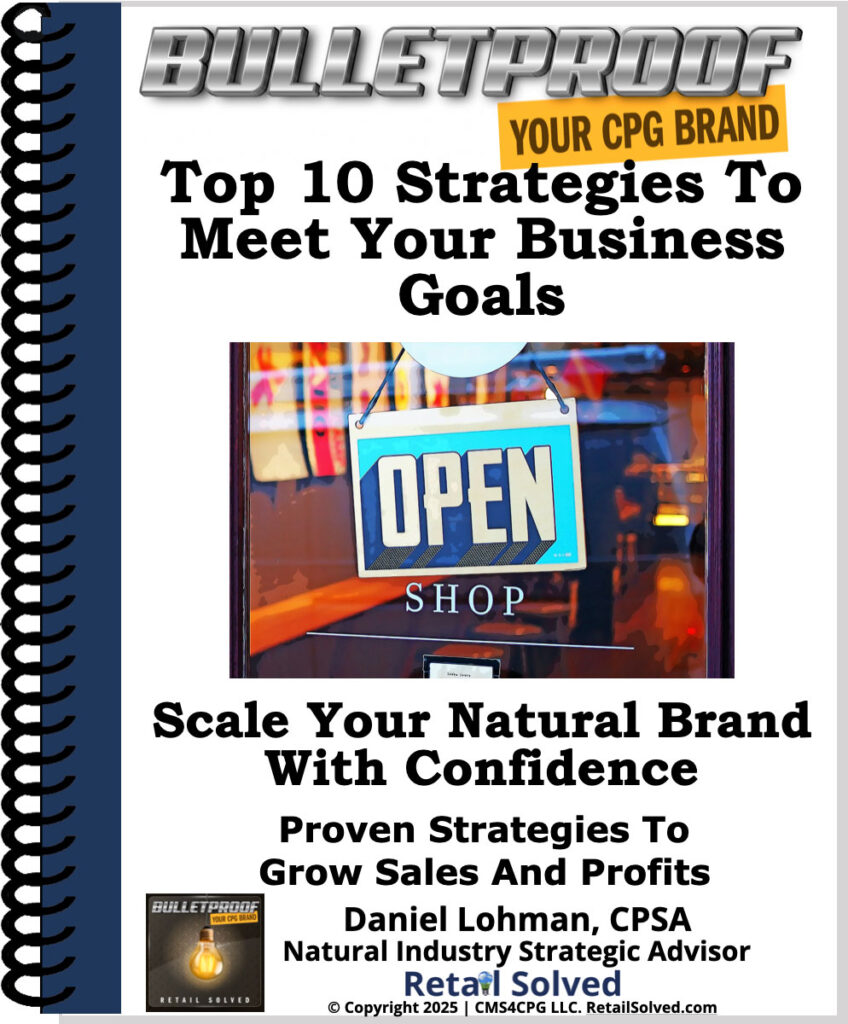
Want The Top 10 Strategies To Build Sustainable Sales And Profits?
Nothing happens until someone buys your products and shoppers can’t buy what they can’t find. To grow sustainable sales and profits, brands need to become experts in their core customers and their retail partners, maximize their product assortment and merchandising, and optimize their trade spending. This guide contains the secret to getting your product onto more store shelves and into the hands of more shoppers.
Image is the property of CMS4CPG LLC, distribution or reproduction is expressively prohibited.
